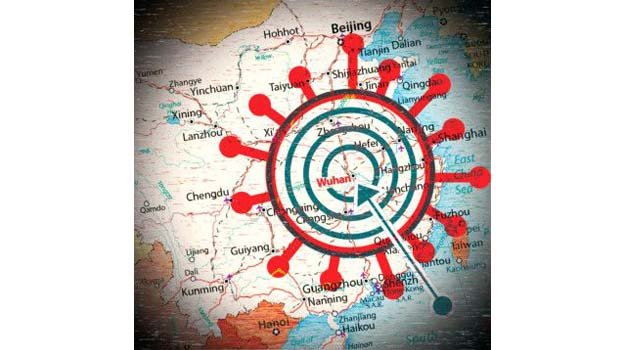Why Wuhan is at the centre of the viral outbreak
City has been pouring resources into science and research but has ignored public health

China’s happiest city isn’t so happy these days. Wuhan, which branded itself as a Chinese version of Phoenix, is now the epicentre of a SARS-like virus that has sickened hundreds. It’s worth asking why this disease came out of an inland technology hub that boasts a young — and presumably healthier — workforce, rather than the mega-cities of Beijing or Shanghai.
Wuhan is an immigrants’ town. It’s home to one of China’s most prestigious engineering schools, Huazhong University of Science and Technology. Roughly 9 per cent of the population is university students, well above the 3 per cent level for Beijing and Shanghai. As of 2018, more than 11 million lived there — making it 25 per cent bigger than New York — but only 8.8 million are permanent residents.
As a result, millions living in Wuhan have been travelling for the Lunar New Year [which began on Saturday]. During last year’s festival season, the city’s main railway station, which is only one kilometre from the seafood market where the outbreak began, hosted 5.5 million commuters. While China suspended all railway travel and flights out of Wuhan on Thursday, much of the travelling may have already been done. The engineering school, for instance, started its winter break on January 9.
Poor hygiene
Wuhan has been carefully fostering a reputation as an alternative to Shenzhen. In its latest five-year plan, the city set a target of keeping one million college graduates by relaxing its hukou system, the equivalent of a green card that entitles holders to social services such as public-school education. Roughly 21 million travellers passed through the city’s airport in 2016, and a new terminal can host 35 million a year. Chinese society has become a lot more mobile since the SARS epidemic of 2003.
The high volume of labour migration isn’t to blame, however. A city may well expand in size, but basic public services must keep up, too. Take a look at Wuhan’s fiscal spending. While money has poured into hot areas such as technology research, expenditure on public health has been stagnant. As recently as last June, Wuhan residents complained about poor hygiene at the seafood market, but the municipality didn’t respond. While Beijing and Shanghai host lots of migrants, too, both cities spend more on this sector. Populations there have flattened amid restrictions on labour inflows.
A taste for exotic animal meat
Granted, money is tight for local governments as the economy slows, especially after last year’s $300 billion (Dh1.1 trillion) tax cut. As a result, bureaucrats have to make a tough decision between grants to chip designers and public health.
The former serves President Xi Jinping’s Made in China 2025 drive, while the latter minimises black swan scenarios.
The temptation, unfortunately, is that local officials embrace China’s industrial ambitions. It’s a lot easier to make a plan for the future than fix the past.
After all, the Chinese have had a taste for exotic animal meat for centuries; why should we worry about the hygiene of a wet market now? Until this mentality is cleansed, however, we can only expect more outbreaks.
Shuli Ren is a Bloomberg Opinion columnist covering Asian markets. Source: Gulf News



